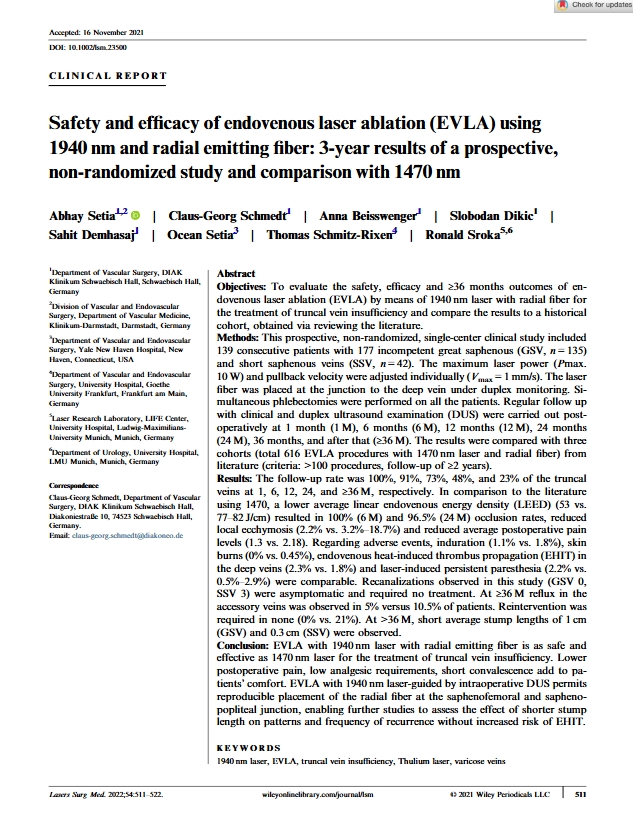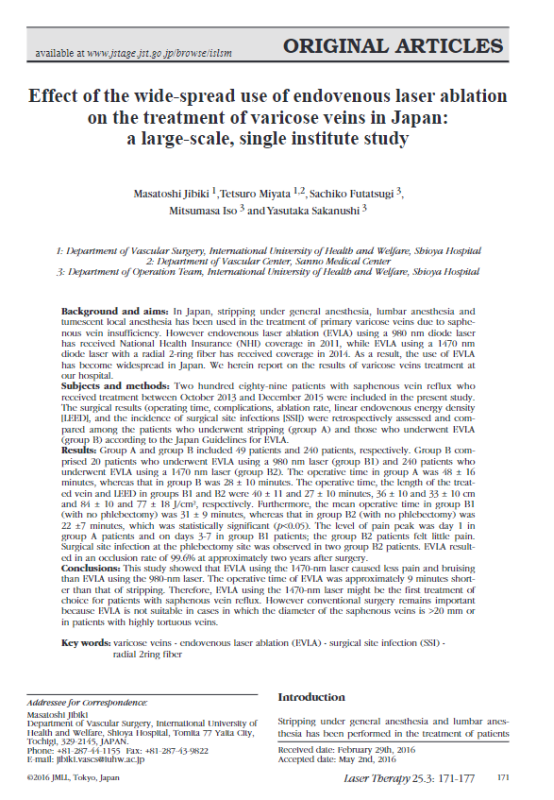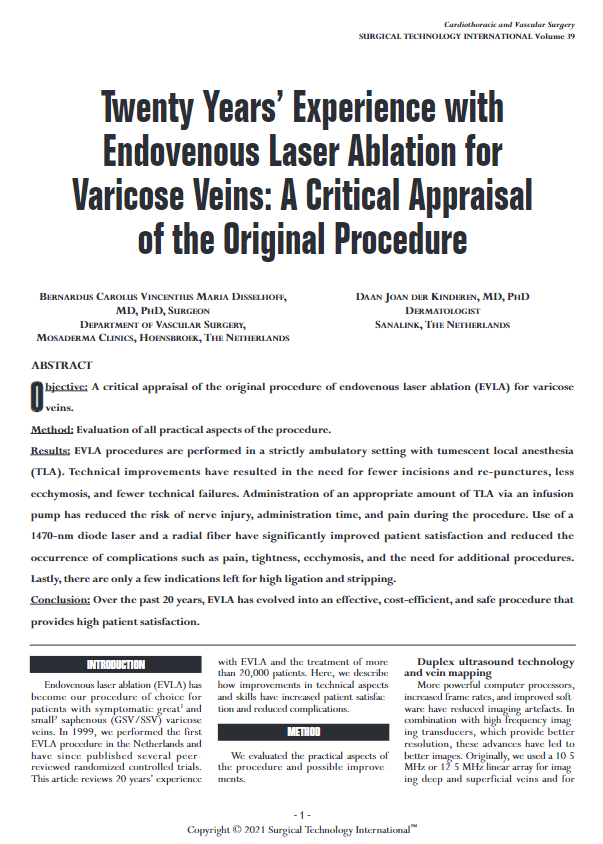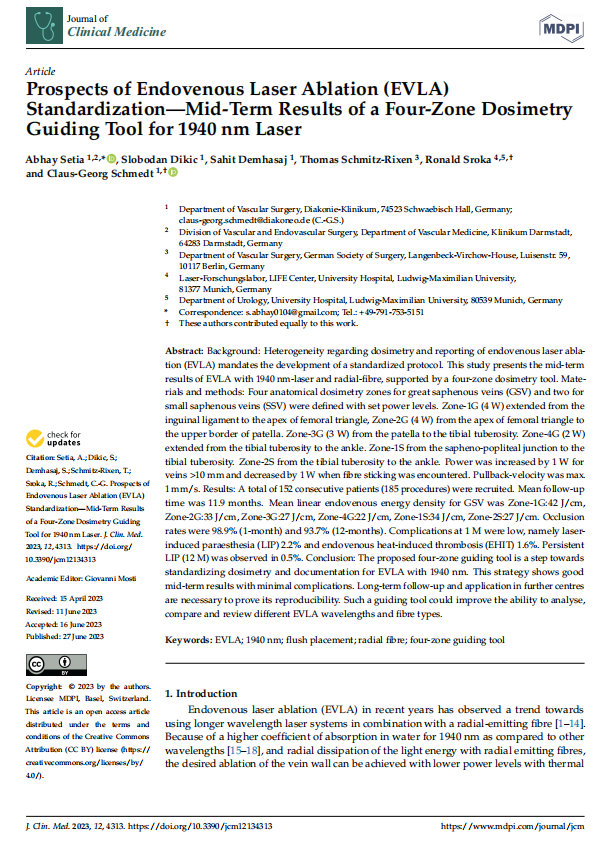1940 nm vs. 1470 nm EVLA: 3-Year Results with Radial Fiber
This prospective, single-center study evaluated the safety and efficacy of 1940 nm endovenous laser ablation (EVLA) with a radial fiber over a 3-year follow-up. A total of 177 procedures were performed on incompetent great and small saphenous veins. The results showed significant reductions in vein diameter and complete disappearance of treated segments. Compared to historical data on 1470 nm EVLA, the 1940 nm laser demonstrated lower postoperative pain, fewer complications, and effective vein occlusion with less energy. Manual pullback and individualized dosimetry (40–60 J/cm) contributed to favorable outcomes. While the study was non-randomized and limited by COVID-19, findings support the use of 1940 nm EVLA as a safe, efficient option for treating truncal vein incompetence. Further randomized studies are recommended.




